What specific processes are responsible for planetary formation and evolution? This is what a recent study published in Astronomy & Astrophysics hopes | Space
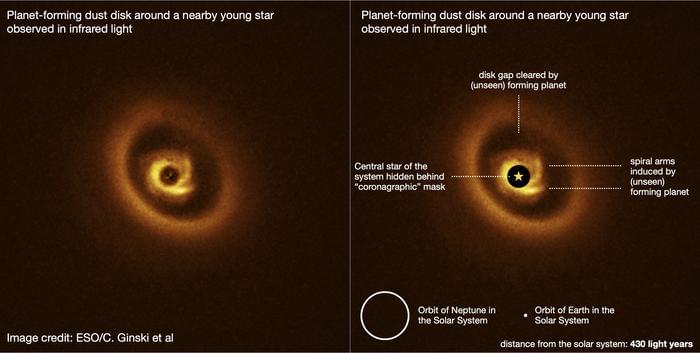


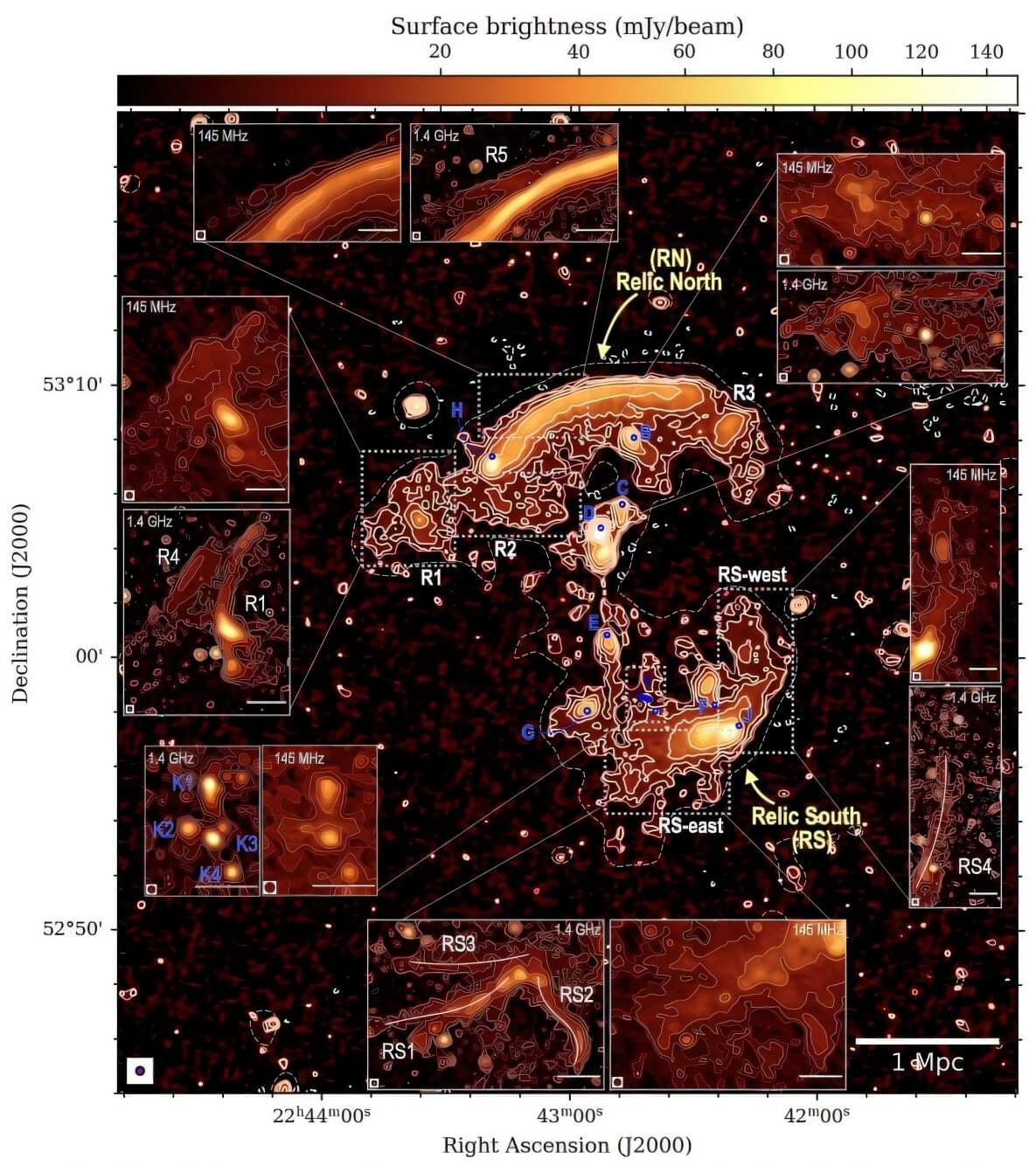
Using the Low Frequency Array (LOFAR), European astronomers have investigated a galaxy cluster designated CIZA J2242.8+5301, dubbed the Sausage cluster. The observations conducted at very low radio frequencies provide more insights into the properties of radio relics in this cluster. The new findings are presented in a research paper published May 29 on the arXiv preprint server.
Galaxy clusters consist of up to thousands of galaxies bound together by gravity. They are the largest known gravitationally-bound structures in the universe, and therefore serve as excellent laboratories for studying galaxy evolution and cosmology. Observations show that galaxy clusters generally form as a result of mergers and grow by accreting sub-clusters.
CIZA J2242.8+5301 is a well-studied merging galaxy cluster at a redshift of 0.192. It contains prominent double radio relics (diffuse, elongated radio sources of synchrotron origin) and other diffuse radio sources. CIZA J2242.8+5301 was nicknamed the Sausage cluster due to the distinctive morphology of its northern relic.

To Shakespeare’s Hamlet, we humans are “the paragon of animals.” But recent advances in genetics are suggesting that humans are far from being evolution’s greatest achievement.
For example, humans have an exceptionally high proportion of fertilized eggs that have the wrong number of chromosomes and one of the highest rates of harmful genetic mutation.
In my new book, “The Evolution of Imperfection,” I suggest that two features of our biology explain why our genetics are in such a poor state. First, we evolved a lot of our human features when our populations were small, and second, we feed our young across a placenta.
What if the most powerful organ in your body isn’t your brain, but your heart? In this deeply revealing compilation from Gaia’s MISSING LINK Series 👉 https://www.gaia.com/lp/mindful-maste…, Gregg Braden uncovers a forgotten truth buried in both science and ancient wisdom—that your heart holds 40,000 brain-like cells capable of memory, emotion, and thought.
Learn how you can unlock total recall, deep intuition, and spontaneous healing through harmonizing two forgotten systems: your heart and your brain.
00:00 – The Nightmare That Solved a Murder.
03:15 – Human Chromosome 2: Engineered Evolution?
07:30 – The Brain in the Heart: 40,000 Neurites.
11:00 – Transferred Memories in Organ Transplants.
16:20 – Little Girl’s Memory Solves a Crime.
21:15 – Heart Intelligence vs Brain Intelligence.
25:00 – Ancient Cultures & Heart-Based Education.
28:40 – Unlocking Superhuman Abilities.
32:20 – Total Recall & Intuition on Demand.
36:10 – Reprogramming the Subconscious.
39:00 – Heart-Brain Harmony Triggers 1,300 Biochemical Reactions.
Cherck Out Gregg’s latest book Pure Human: The Hidden Truth of Our Divinity, Power, and Destiny here 👉 https://hayhs.com/ph_pp_hc_az.
👍 LIKE if you enjoyed this video!
🔄 SHARE with your friends and spread the knowledge!
🔔 SUBSCRIBE for more amazing content!
👉 Hit the BELL Icon on our HOME Page to stay updated with our latest releases!
Stay Connected.
Official website: https://greggbraden.com/about-gregg-braden/
Facebook: https://www.facebook.com/GreggBraden.
Twitter: https://twitter.com/GreggBraden.
Instagram: https://www.instagram.com/Gregg.Braden/
This channel is managed by:
Zohar Entertainment Group International Inc, USA
YouTube Certified Enterprise Partner — FAM Networks, USA
Facebook: / greggbraden.
Twitter: / greggbraden.
Instagram: / gregg.braden

Scientists have revealed a novel means of tracking everything from wildlife to illicit substances using environmental DNA detectable in the air around us.
The findings, outlined in a new study published in Nature Ecology & Evolution, show that tracking virtually anything using environmental DNA can be achieved as simply as capturing this ever-present genetic material from the air using a vacuum.
The discovery, made by a team led by David Duffy, Ph.D., reveals DNA as a powerful new tool for detecting and tracking living organisms and a range of substances in virtually any environment.

Humans are social creatures; we live in family groups, socialise with friends, and work with colleagues. Evolutionary psychologist Robin Dunbar’s ‘social brain hypothesis’ suggests that brain size is directly related to social group size in mammals. The bigger the group, the bigger the brain. In this interview with Research Outreach, we find out how Dunbar developed his theory as well as his now famous ‘Dunbar’s number’
Robin Dunbar discusses his eponymous ‘Dunbar’s Number’, primates to people, and why size matters with social groups and evolution.
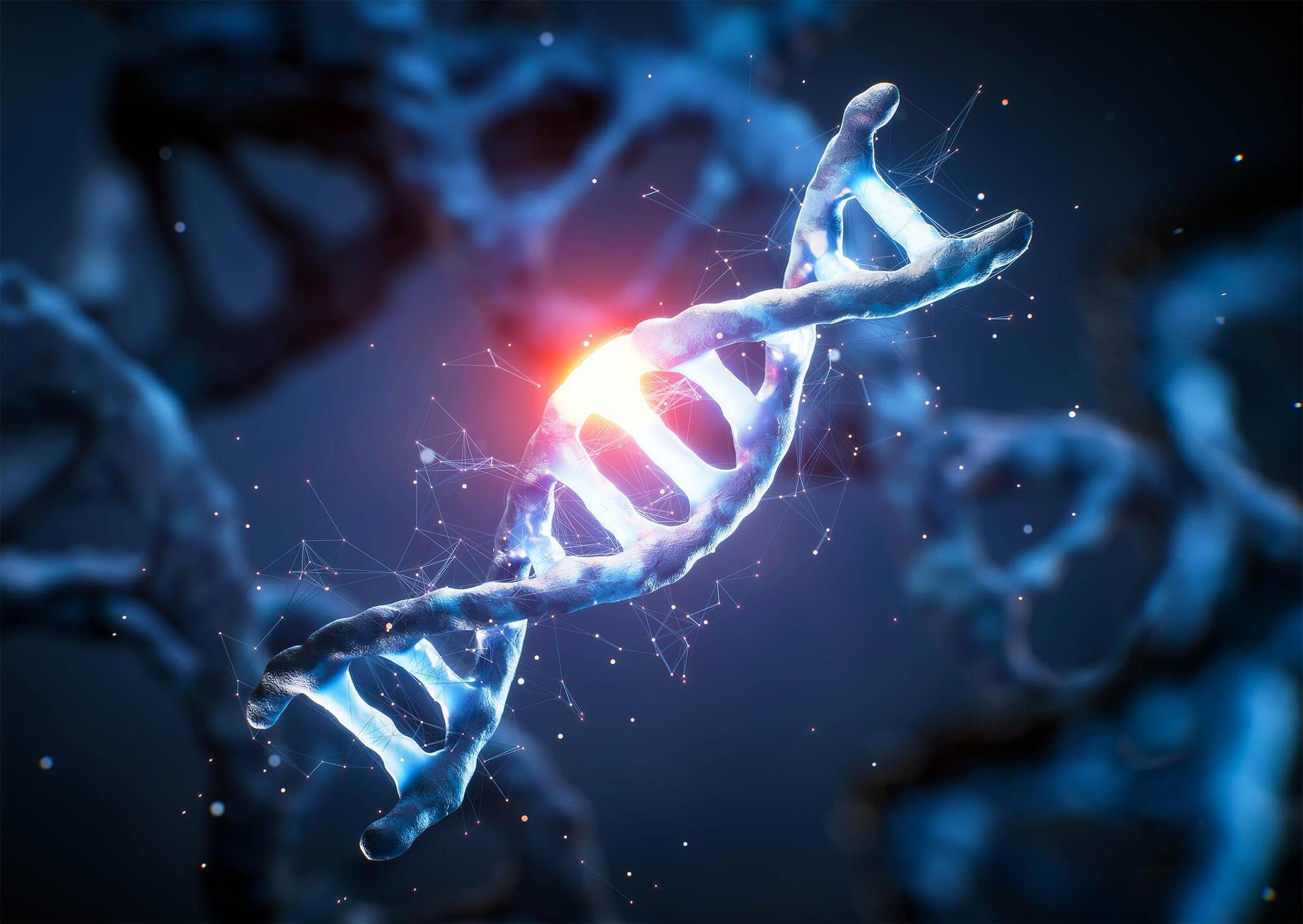
The researchers are especially interested in how our bodies maintain balance. Metabolic homeostasis, the fancy term for it, may have shaped more traits than we realize.
And as diets continue to change today, our ancient genetic choices could still be nudging us in new directions.
The study is published in the journal Cell Genomics.
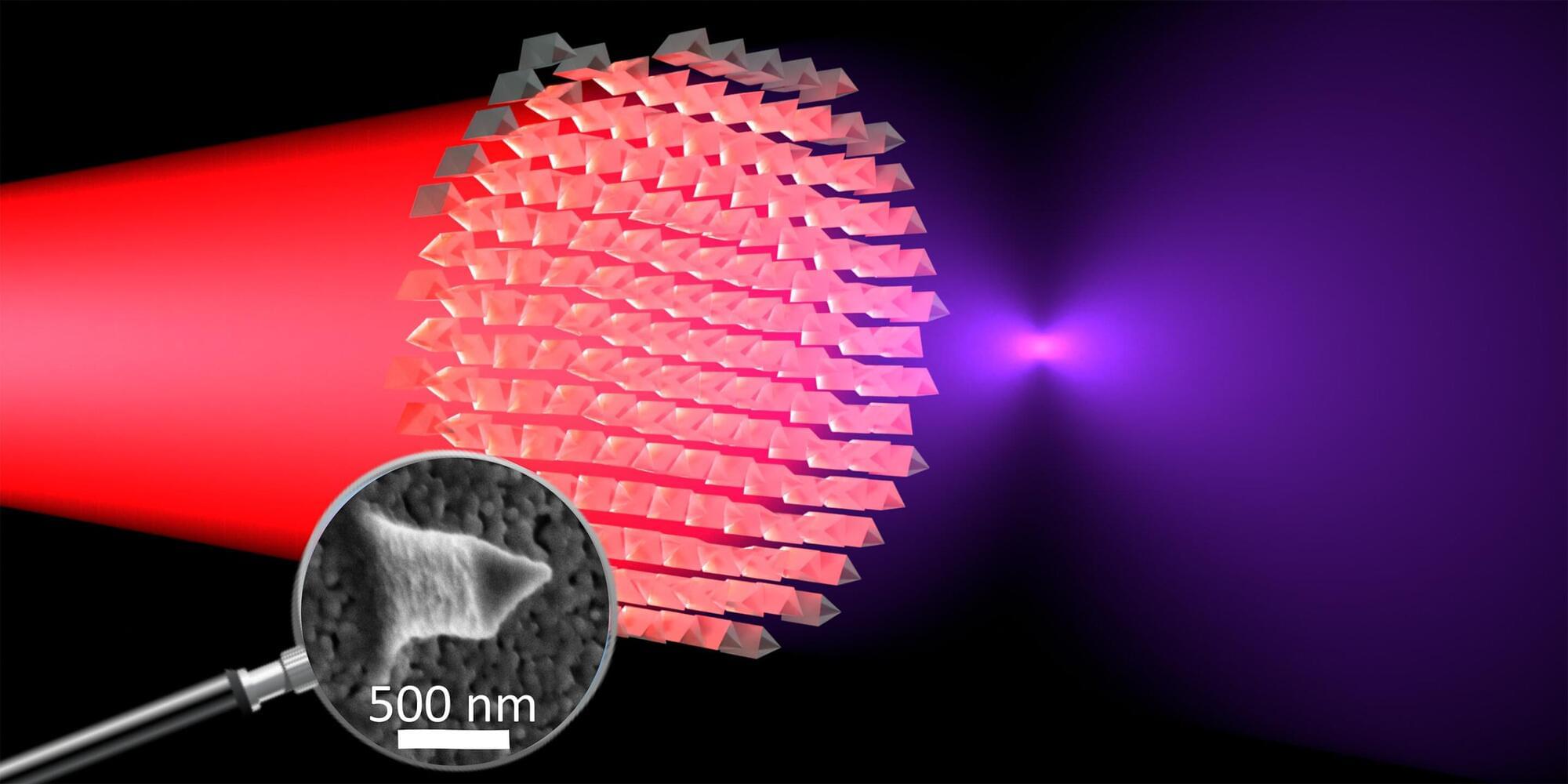
Physicists at ETH Zurich have developed a lens that can transform infrared light into visible light by halving the wavelength of incident light. The study is published in Advanced Materials.
Lenses are the most widely used optical devices. Camera lenses or objectives, for example, produce a sharp photo or video by directing light at a focal point. The speed of evolution in the field of optics in recent decades is exemplified by the transformation of conventional bulky cameras into today’s compact smartphone cameras.
Even high-performance smartphone cameras still require a stack of lenses that often account for the thickest part of the phone. This size constraint is an inherent feature of classic lens design—a thick lens is crucial for bending light to capture a sharp image on the camera sensor.
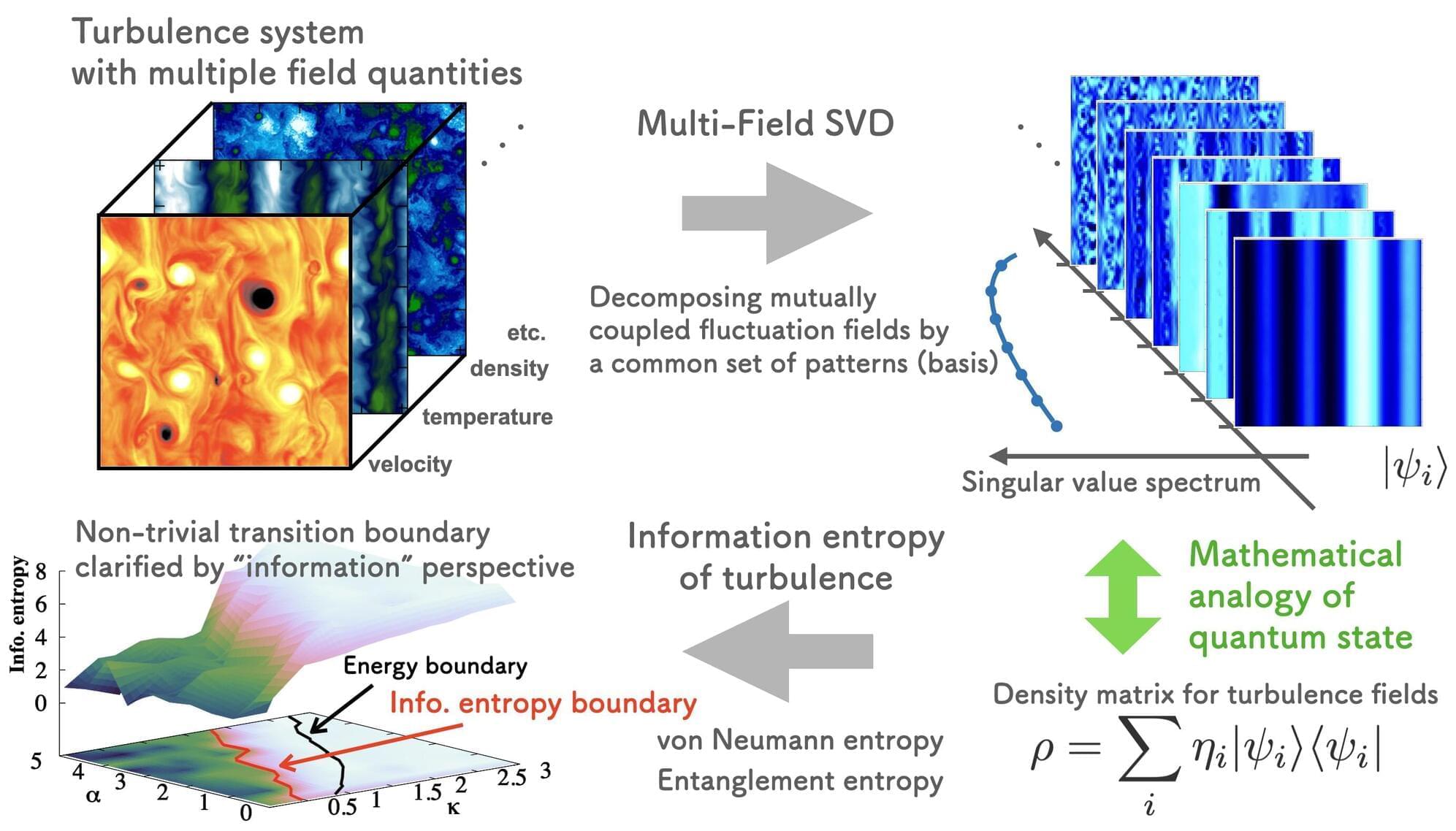
Turbulence in nature refers to the complex, time-dependent, and spatially varying fluctuations that develop in fluids such as water, air, and plasma. It is a universal phenomenon that appears across a vast range of scales and systems—from atmospheric and oceanic currents on Earth, to interstellar gas in stars and galaxies, and even within jet engines and blood flow in human arteries.
Turbulence is not merely chaotic; rather, it consists of an evolving hierarchy of interacting vortices, which may organize into large-scale structures or produce coherent flow patterns over time.
In nuclear fusion plasmas, turbulence plays a crucial role in regulating the confinement of thermal energy and the mixing of fuel particles, thereby directly impacting the performance of fusion reactors. Unlike simple fluid turbulence, plasma turbulence involves the simultaneous evolution of multiple physical fields, such as density, temperature, magnetic fields, and electric currents.